Helmet Item Number: 2452 from the The Burke: University of Washington
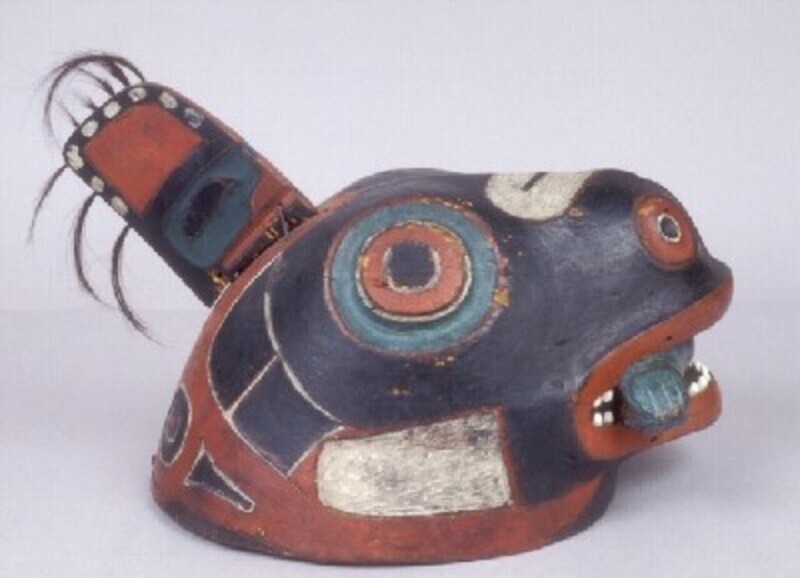

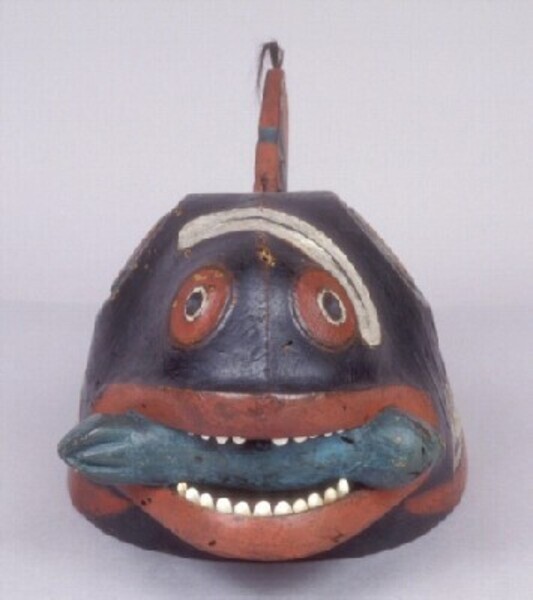
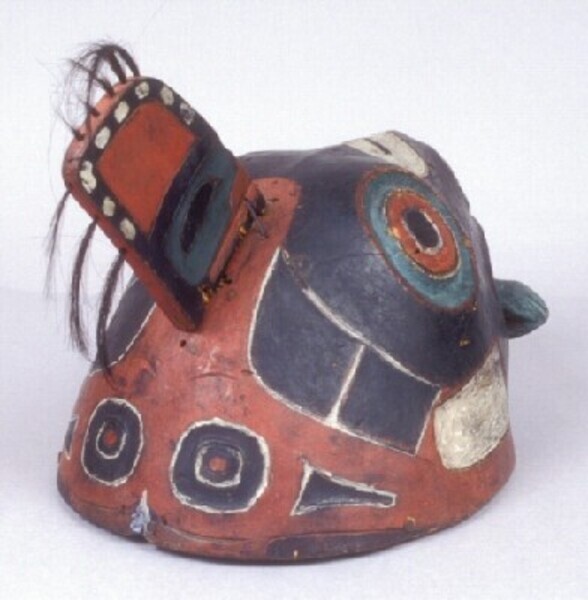
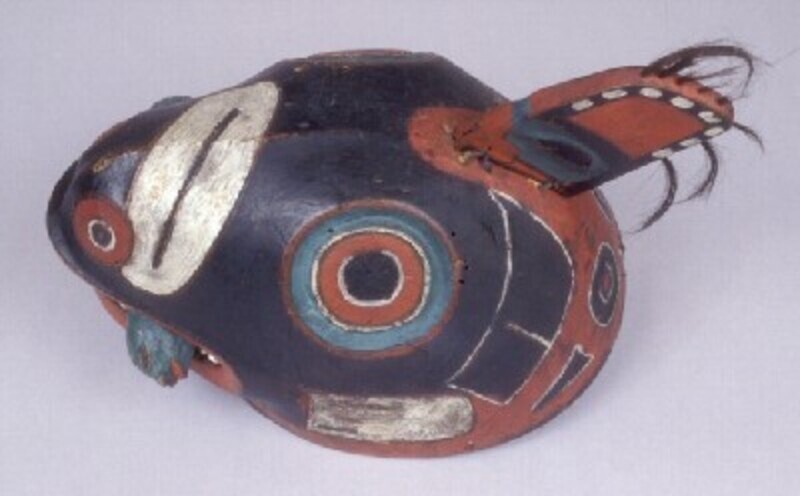

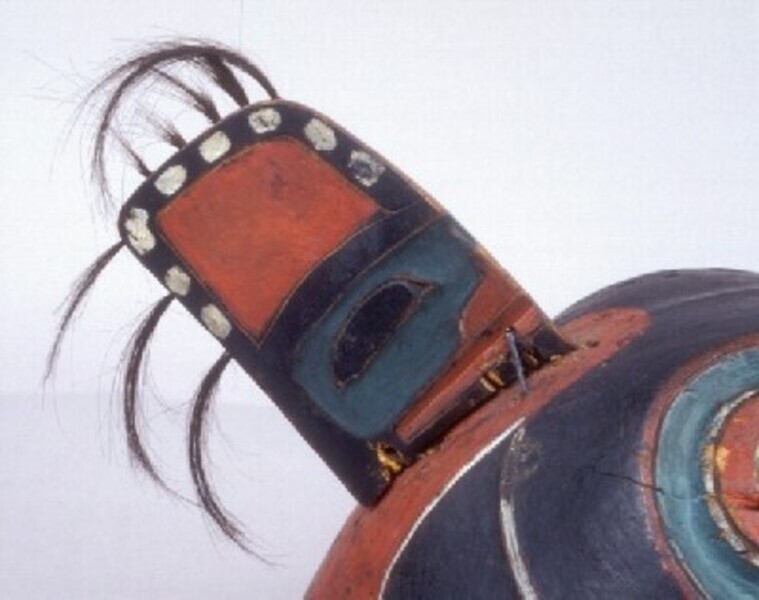


Exhibit Label
The Tlingit warriors who captured and destroyed the Russian fort Archangel Michael in 1802 wore helmets shaped in imitation of ferocious animals with gleaming teeth and of monstrous beings (Kyril Khlebnikov, quoted in Miller and Miller 1967:140). When Alexander Baranoff retook Sitka in 1804, he captured some of those helmets and sent them back to Russia with the Neva's commander Urey Lisiansky. They are among the many old Tlingit helmets in the Museum of Anthropology and Ethnography in St. Petersburg today. This killer whale helmet is from that period, and could have even been worn in the 1802 battle, since according to Russian accounts, the plan for the general uprising was made at Angoon, the Hootsnuwoo village. (Holm, Spirit and Ancestor, 1987)
Automatically Generated From Material
The pigment is black, red, blue, and white.
Item History
- Received from George T. Emmons
What
Who
- Culture
- Tlingit: Hutsnuwu
- Received from
- George T. Emmons
Where
- Holding Institution
- The Burke: University of Washington
Other
- Credit
- Purchased from George T. Emmons
- Motif
- Killer Whale | Seal (Sea Mammal)
- Collection
- Burke Museum Ethnology Collection